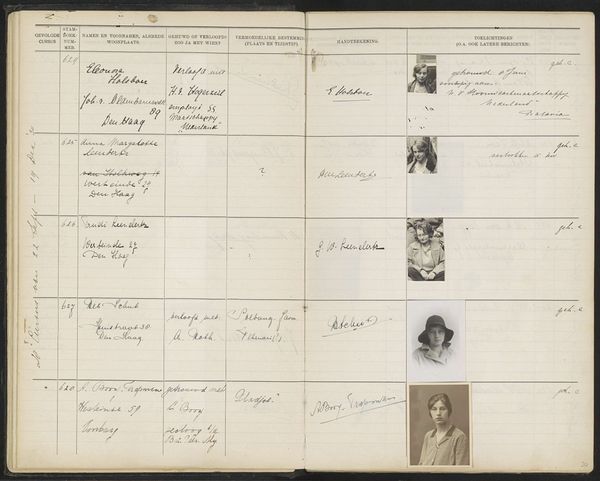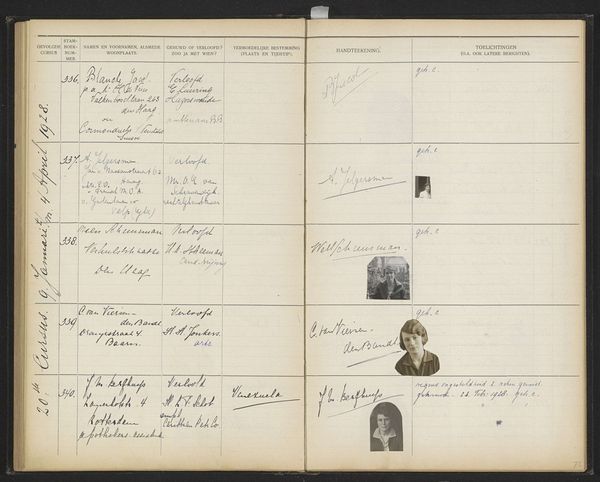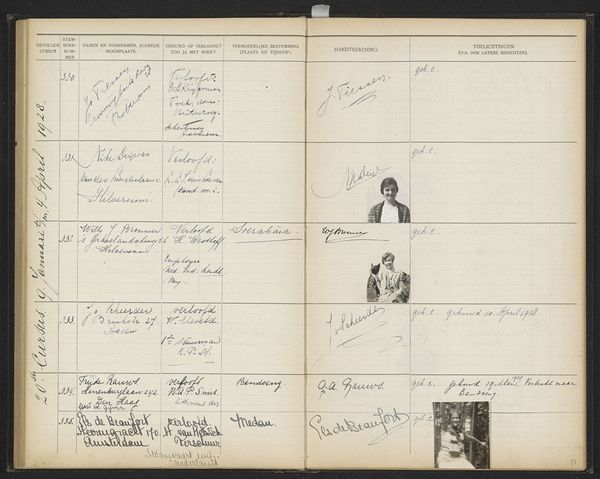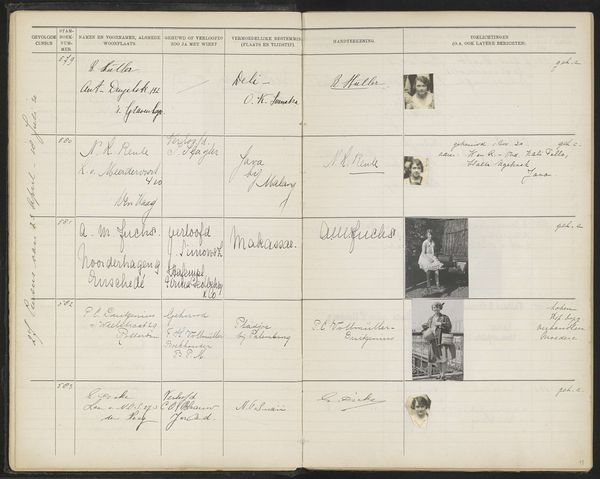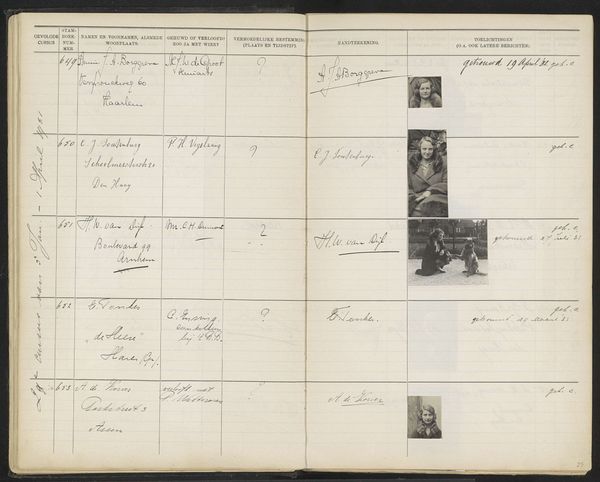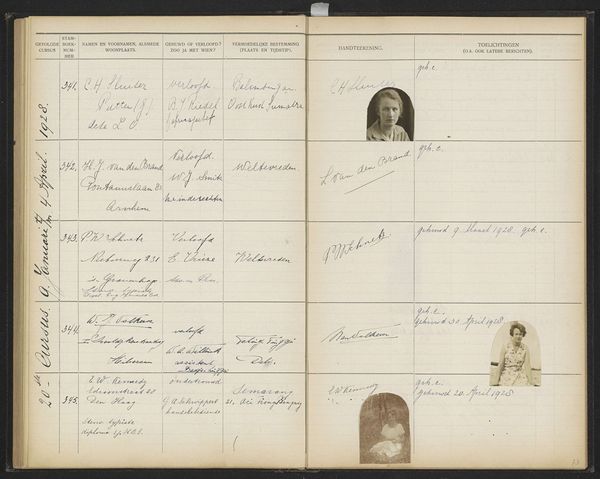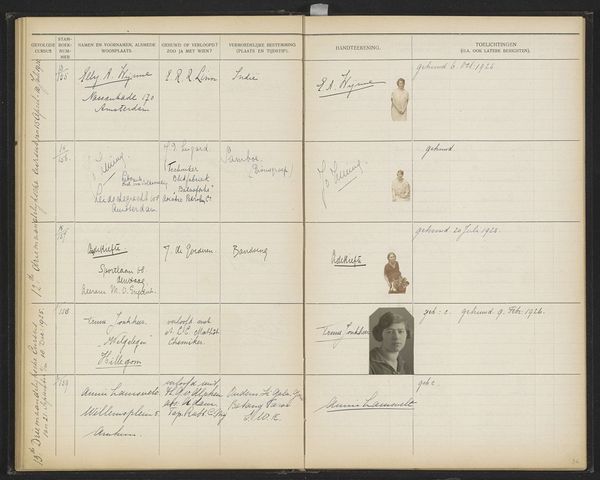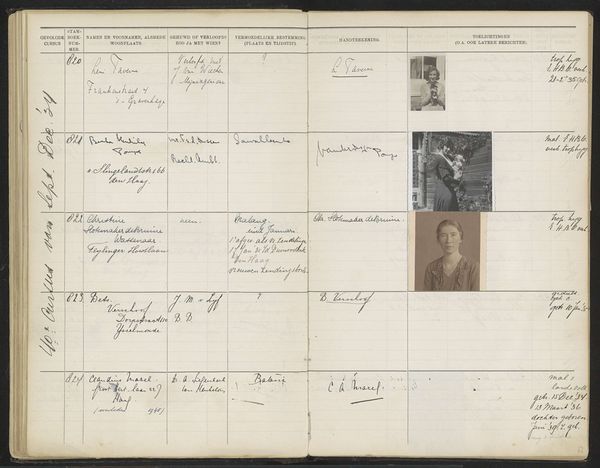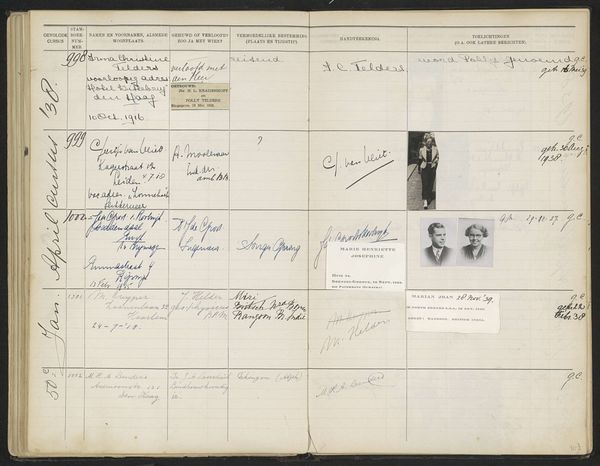
Blad 104 uit Stamboek van de leerlingen der Koloniale School voor Meisjes en Vrouwen te 's-Gravenhage deel I (1921-1929) Possibly 1929
0:00
0:00
paper, photography
#
portrait
#
paper
#
photography
Dimensions: height 340 mm, width 440 mm
Copyright: Rijks Museum: Open Domain
Curator: This page from the Stamboek van de leerlingen der Koloniale School voor Meisjes en Vrouwen te 's-Gravenhage deel I, likely from 1929, presents a fascinating composite of handwritten entries, photographic portraits, and bureaucratic record-keeping on paper. It really speaks to a particular historical context. What strikes you initially about it? Editor: It's fascinating to see these portraits embedded within what is essentially a ledger. It’s like a collection of tiny studio photographs repurposed into an institutional document. What do you see as the significance of the materials used in constructing this page? Curator: I'm immediately drawn to the juxtaposition of the standardized format—the printed lines, the regimented columns—with the handwritten script and individually posed photographs. The materials tell a story of early 20th-century Dutch colonial education, where individuality, captured in these personal photographs, is simultaneously framed and contained by institutional power. How does the materiality of this piece – the paper, the photographic prints – influence your interpretation? Editor: It almost seems like the school is trying to standardize what is ultimately a very human experience. Curator: Precisely. Think about the labor involved – the paper manufacturing, the photography, the administrative work. These were all processes often outsourced, maybe even relying on colonial networks. The contrast creates a visual tension, don't you think? Editor: It does. It makes me wonder about the accessibility of photography at the time, and who had the privilege of having their portrait taken. Curator: Exactly. It provokes us to question not just *what* is depicted but *how* and *why*. I've been pondering whether that tension reveals underlying power dynamics within the colonial education system itself. Editor: I hadn't considered that, but viewing the piece through the lens of labor and production definitely offers a new understanding of it. Curator: Indeed. And looking closely reminds us that even seemingly mundane documents can reveal complex narratives about individuals, institutions, and the broader material conditions of their time.
Comments
No comments
Be the first to comment and join the conversation on the ultimate creative platform.
